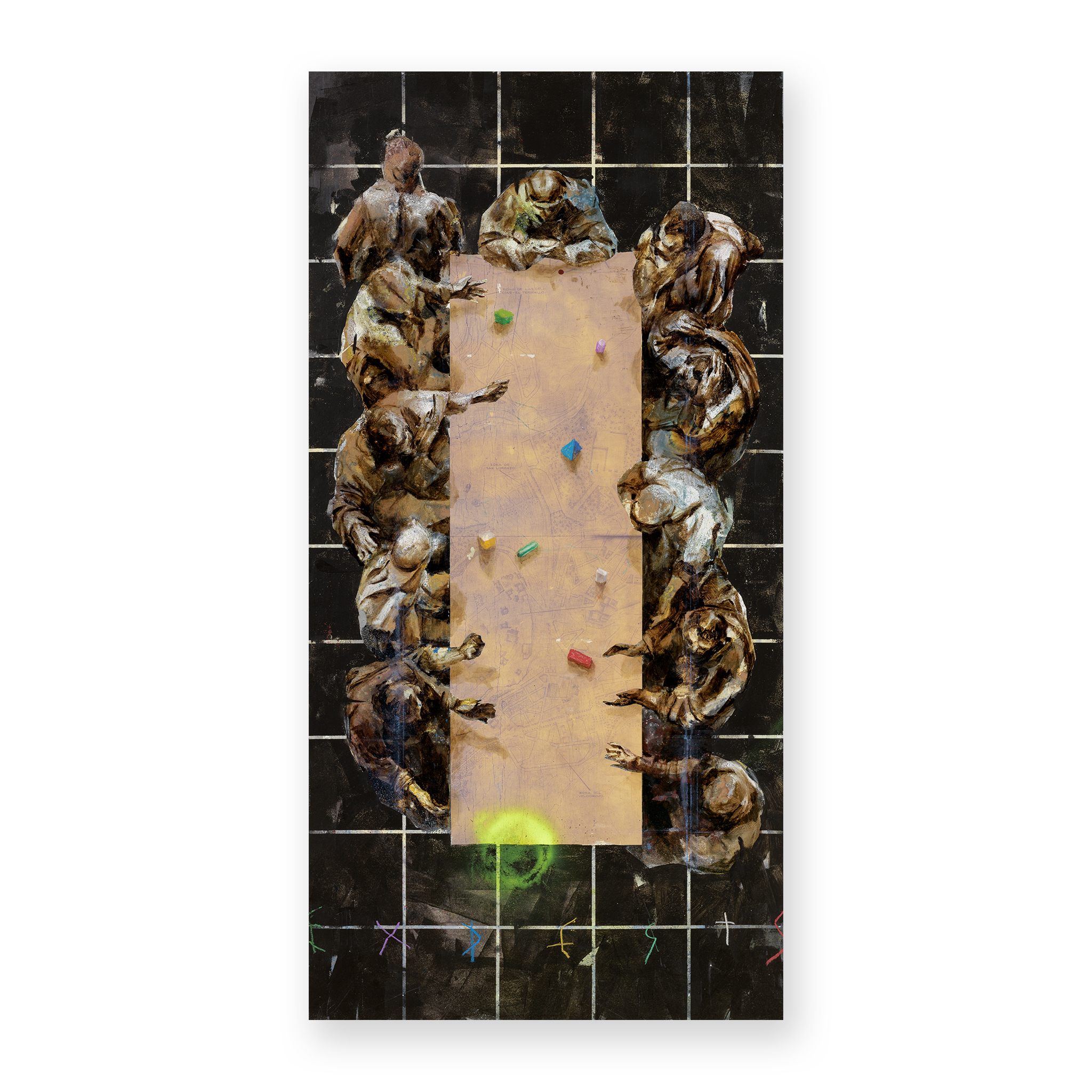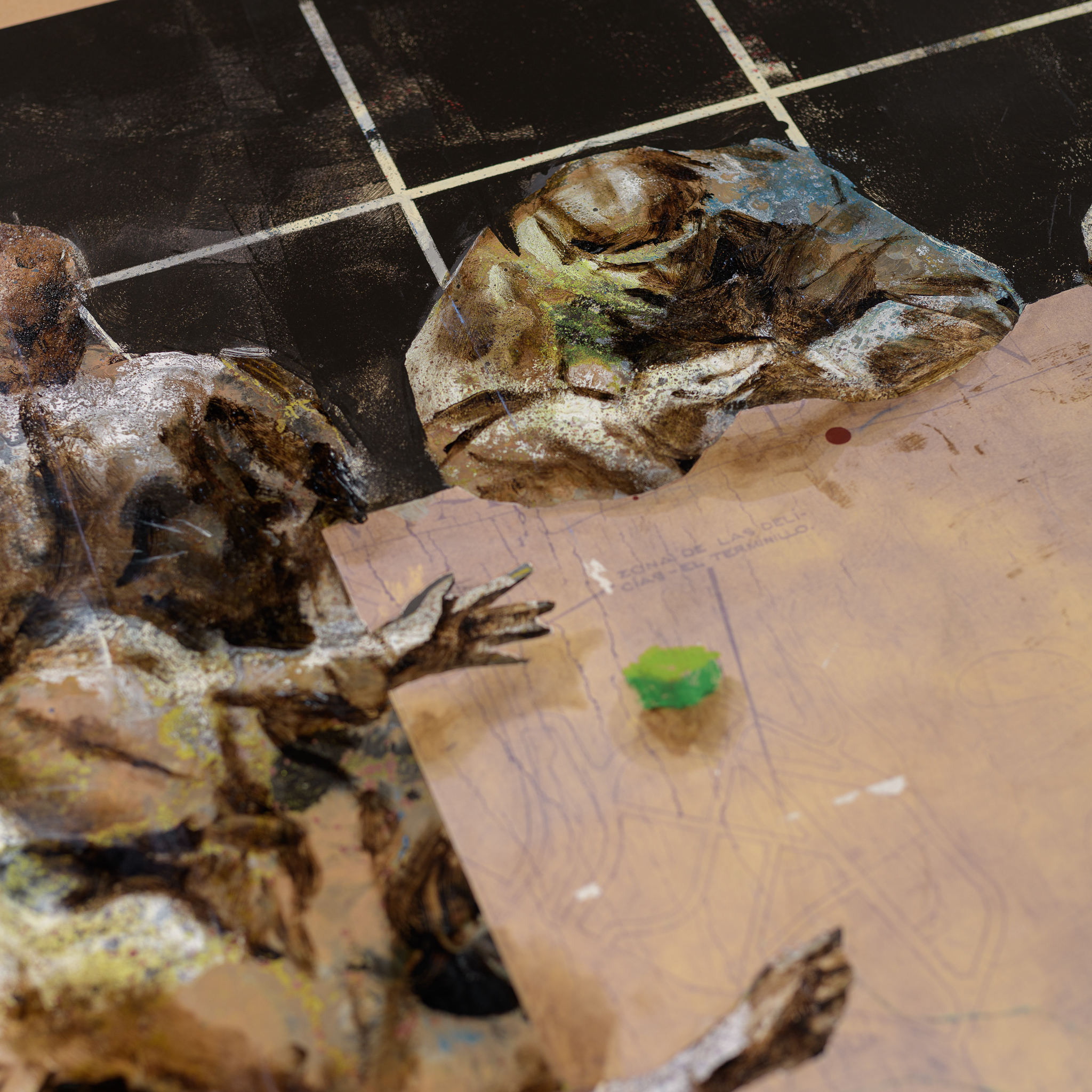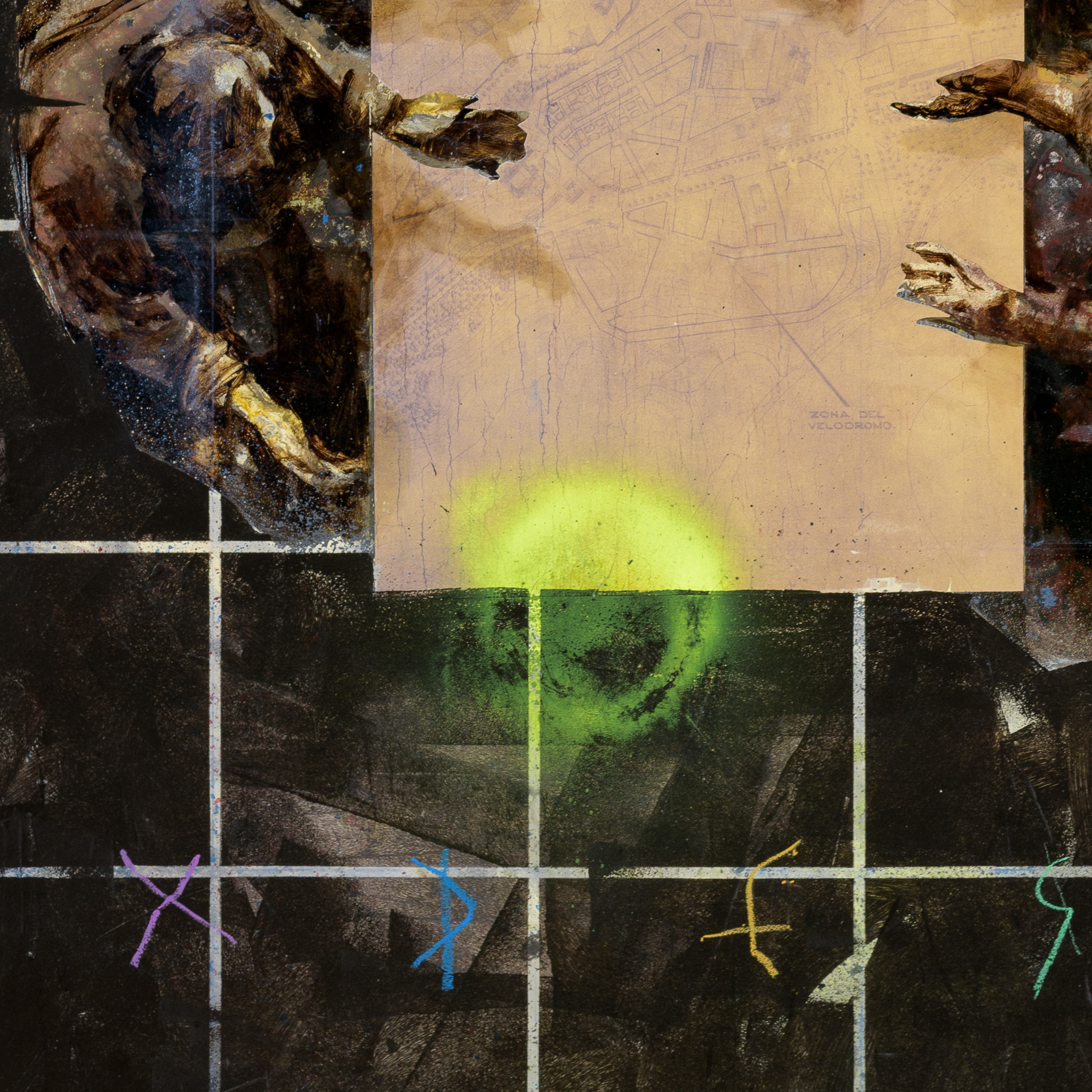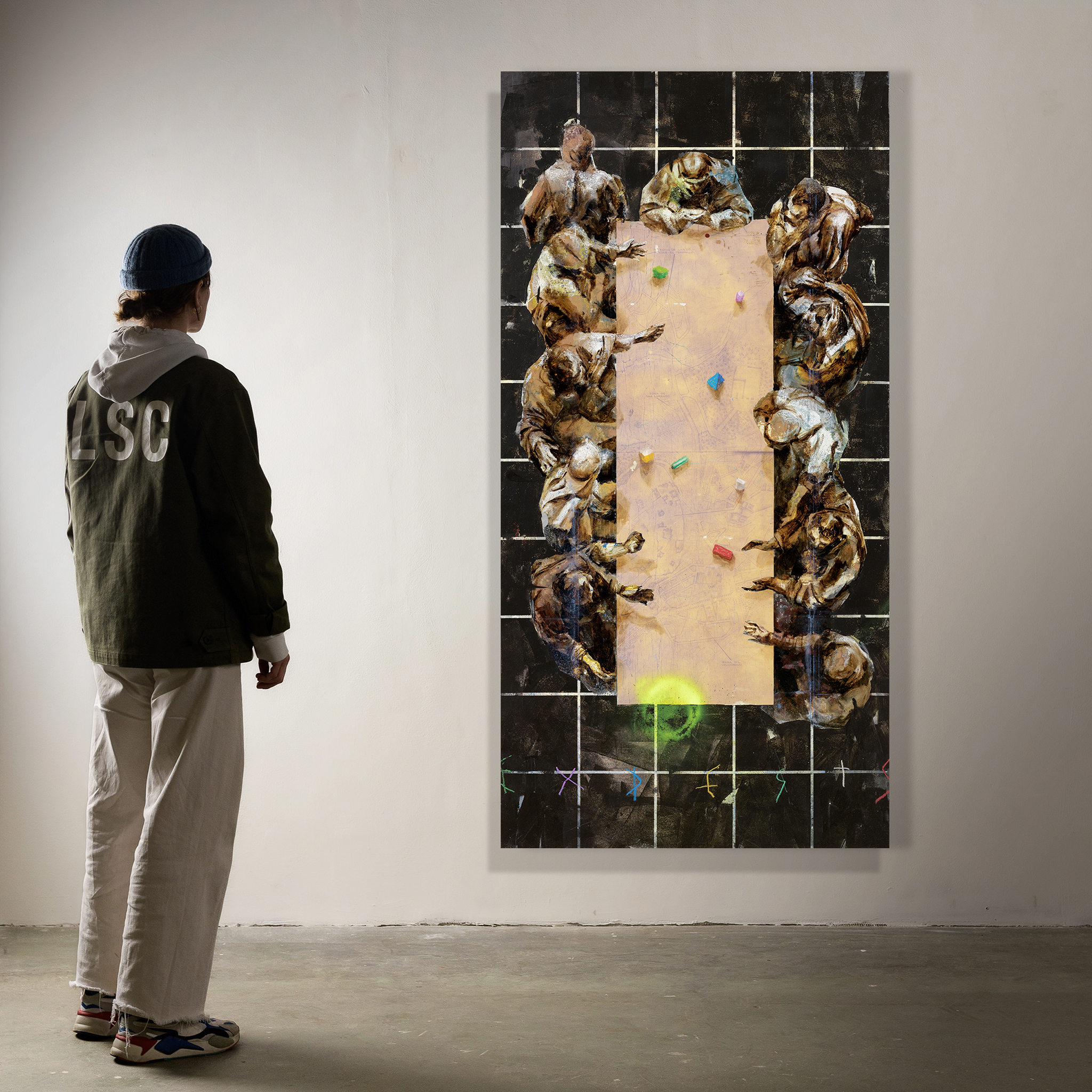MONUMENTA / CENTURIA
Description
BORONDO – Monumenta / Centuria
Acrylic enamel, bitumen, acrylic, oil, and collage on aluminum plate
100 x 200 cm, 2022
Artist info
Borondo
More info
What is a monument?
The term “monument” comes from the Latin monere and indicates a “sign that was placed and that remains in the memory of a person or of an event”.
A monument represents the architectural exposition of a message, of an ideology, or of a thought. Its physical matter is infused with a meaning related to a certain time or place. A monument is erected to celebrate a moment and to last forever, which is an intrinsic contradiction in terms.
This contradiction also extends to the urban fabric to which the monument belongs. As Aldo Rossi writes, each city finds its image, its essence, and its memory through “the contrast between what is specific and what is universal and between the individual and the collectivity”, and therefore through the relationship between what is eternal and what may change, between the “urban facts” that structure it.
Gonzalo Borondo questions people’s need to perpetuate themselves and their vision of things by imposing their presence on their surroundings. This translates into their compulsion to leave an indelible mark. But the context and the society they belong to are instead characterized by eternal change, which cyclically encounters the urge to oppose what remains unalterable.
Like the roots of a tree, a monument reminds us every day of our history and keeps us immobile, anchored to the land we were born in, in a time that is not ours and in a static condition that does not belong to us.
The destruction of a monument, be it physical or ideological, thus becomes the medium and the symbol for a revolution that establishes the breaking point necessary for evolution.
“Monumenta” springs from this inexhaustible relationship of dependence and conflict: a series of paintings on aluminum plates through which Borondo speaks to us of rupture and reconciliation, of inertia and change, of all eternal antinomies.
Secure payments
Pay in monthly installments
We ship all over the world
SUPPORT ON PURCHASES
MORE Borondo
Go to artist page-

-

-

800,00€
Buy now


























